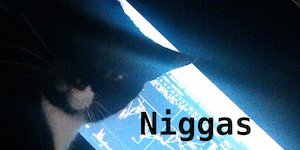Late 24 February to early 25 February 1942 in Los Angeles, California
The "Battle of Los Angeles""Radars picked up an unidentified target 120 miles west of Los Angeles. Antiaircraft batteries were alerted at 0215 and were put on Green Alert—ready to fire—a few minutes later. The AAF kept its pursuit planes on the ground, preferring to await indications of the scale and direction of any attack before committing its limited fighter force. Radars tracked the approaching target to within a few miles of the coast, and at 0221 the regional controller ordered a blackout. Thereafter the information center was flooded with reports of "enemy planes, " even though the mysterious object tracked in from sea seems to have vanished. At 0243, planes were reported near Long Beach, and a few minutes later a coast artillery colonel spotted "about 25 planes at 12,000 feet" over Los Angeles. At 0306 a balloon carrying a red flare was seen over Santa Monica and four batteries of anti-aircraft artillery opened fire, whereupon "the air over Los Angeles erupted like a volcano." From this point on reports were hopelessly at variance."
"Probably much of the confusion came from the fact that anti-aircraft shell bursts, caught by the searchlights, were themselves mistaken for enemy planes. In any case, the next three hours produced some of the most imaginative reporting of the war: "swarms" of planes (or, sometimes, balloons) of all possible sizes, numbering from one to several hundred, traveling at altitudes which ranged from a few thousand feet to more than 20,000 and flying at speeds which were said to have varied from "very slow" to over 200 miles per hour, were observed to parade across the skies. These mysterious forces dropped no bombs and, despite the fact that 1,440 rounds of anti-aircraft ammunition were directed against them, suffered no losses. There were reports, to be sure, that four enemy planes had been shot down, and one was supposed to have landed in flames at a Hollywood intersection. Residents in a forty-mile arc along the coast watched from hills or rooftops as the play of guns and searchlights provided the first real drama of the war for citizens of the mainland. The dawn, which ended the shooting and the fantasy, also proved that the only damage which resulted to the city was such as had been caused by the excitement (there was at least one death from heart failure), by traffic accidents in the blacked-out streets, or by shell fragments from the artillery barrage. Attempts to arrive at an explanation of the incident quickly became as involved and mysterious as the "battle" itself. The Navy immediately insisted that there was no evidence of the presence of enemy planes, and [Secretary of the Navy], Frank Knox announced at a press conference on 25 February that the raid was just a false alarm. At the same conference he admitted that attacks were always possible and indicated that vital industries located along the coast ought to be moved inland. The Army had a hard time making up its mind on the cause of the alert. A report to Washington, made by the Western Defense Command shortly after the raid had ended, indicated that the credibility of reports of an attack had begun to be shaken before the blackout was lifted. This message predicted that developments would prove "that most previous reports had been greatly exaggerated." The Fourth Air Force had indicated its belief that there were no planes over Los Angeles. But the Army did not publish these initial conclusions. Instead, it waited a day, until after a thorough examination of witnesses had been finished. On the basis of these hearings, local commanders altered their verdict and indicated a belief that from one to five unidentified airplanes had been over Los Angeles."




